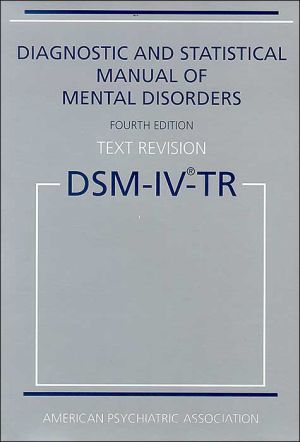Guide to Asperger Syndrome
Individuals affected with Asperger Syndrome are often misunderstood and sometimes misdiagnosed when they apply for help. A Guide to Asperger Syndrome is an accessible handbook for all those touched by Asperger syndrome, one of the most common variants of disorders in the so-called autism spectrum. Christopher Gillberg, a world-renowned authority in the field, gives an in-depth account of symptoms, diagnosis, prevalence, background factors, prognosis, and intervention. This book is intended...
Search in google:
This is an accessible handbook for all those touched by Asperger syndrome; clinicians, those affected and carers alike. Doody Review Services Reviewer:Shiraz Butt, MD(Rush University Medical Center)Description:This is an overview of one of the most common disorders in the autism spectrum. It covers a wide range of topics including the clinical presentation, diagnostic issues, epidemiology and treatment of Asperger syndrome. Purpose:The purpose is to provide an update on the current advances in the field of autism spectrum disorders. The author has written for a wide audience with the aim of stimulating the development of a common knowledge base about Asperger syndrome in the community at large. This is indeed a worthy objective because the diagnosis of Asperger syndrome is still a controversial issue. The author, through his detailed explanation of the diagnostic issues, has done an excellent job at meeting these objectives. Audience:The book is written for a large audience including individuals with Asperger syndrome, their parents, as well as clinicians working with children, adolescents and adults with developmental, social, and behavioral problems. The author is a world-renowned authority on this subject and he has authored numerous papers and books on Asperger syndrome and related disorders. Features:The book begins by addressing the diagnostic issues including comparisons of the different diagnostic systems currently in use. The author then gives a detailed account of the syndrome through the life cycle of an individual, focusing on developmental issues and comorbid conditions. The author gives an overview of the current knowledge of the etiology including the neurological, neuropsychological and cognitive models. The case vignettes highlight the subtleties in the clinical presentation of Asperger syndrome. The appendixes list the structured instruments, which are very useful for clinical practitioners. Assessment:There have been a number of books written on this subject in the last few years, which parallels the increase in the awareness of this disorder in the general and medical community. This book provides an easily readable and updated guide to those afflicted with Asperger syndrome as well as the professionals in the field.
Preface1Introduction12Definitions53Prevalence204Symptoms in childhood235Symptoms in adolescence436Associated psychiatric and social problems487Other problems598Strengths649Background factors6910Cognitive neuropsychology7911Diagnosis and work-up8912Outcome in the longer term: adults with Asperger syndrome9513Attitudes, interventions and treatment10014Who can help?12315What about all those famous geniuses?12816Case vignettes135Appendices154Further reading161Index169
\ From The CriticsReviewer: Shiraz Butt, MD(Rush University Medical Center)\ Description: This is an overview of one of the most common disorders in the autism spectrum. It covers a wide range of topics including the clinical presentation, diagnostic issues, epidemiology and treatment of Asperger syndrome. \ Purpose: The purpose is to provide an update on the current advances in the field of autism spectrum disorders. The author has written for a wide audience with the aim of stimulating the development of a common knowledge base about Asperger syndrome in the community at large. This is indeed a worthy objective because the diagnosis of Asperger syndrome is still a controversial issue. The author, through his detailed explanation of the diagnostic issues, has done an excellent job at meeting these objectives. \ Audience: "The book is written for a large audience including individuals with Asperger syndrome, their parents, as well as clinicians working with children, adolescents and adults with developmental, social, and behavioral problems. The author is a world-renowned authority on this subject and he has authored numerous papers and books on Asperger syndrome and related disorders. "\ Features: The book begins by addressing the diagnostic issues including comparisons of the different diagnostic systems currently in use. The author then gives a detailed account of the syndrome through the life cycle of an individual, focusing on developmental issues and comorbid conditions. The author gives an overview of the current knowledge of the etiology including the neurological, neuropsychological and cognitive models. The case vignettes highlight the subtleties in the clinical presentation of Asperger syndrome. The appendixes list the structured instruments, which are very useful for clinical practitioners. \ Assessment: There have been a number of books written on this subject in the last few years, which parallels the increase in the awareness of this disorder in the general and medical community. This book provides an easily readable and updated guide to those afflicted with Asperger syndrome as well as the professionals in the field.\ \ \ 3 Stars from Doody\ \








